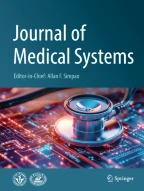Abstract
The Electronic Medical Record (EMR) is a computerized record of clinical, demographic and management information. EMR is an enabling technology that allows physicians to utilize quality improvement processes in the practice of medicine. Oman is one of the Middle Eastern Countries that has implemented an integrated electronic hospital information system at government health care institutions. The system was first applied in primary health care centers and then implemented in hospitals. Survey research highlights factors that affect physician satisfaction and utilizing of this new technology in a hospital setting. Outcome survey data suggests areas for improvement. Specific concerns about patient confidentiality are discussed as well as quality improvement in patient care.
Similar content being viewed by others
References
Mogli G (1996) Importance of medical record in quality improvement. Oman Med J 13(2):56–62
Stein L (1997) The electronic medical records: Promises and threats. Web J 2(3)
Smith J (2000) Health Management Information Systems. A Handbook for Decision Makers, Open University Press, Berkeley, CA
Bingham A (1997) Computerized patient records benefits physician offices. Health Care Financ. Manage 51(9):68–70
World Health Organization. 2001. World Health Report. Geneva.
Darr A, Harrison M, Shakked L, Shalom N (2003) Physicians' and nurses' reactions to electronic medical records systems. J. Health Org Manage 17(5):349–359
Sitting D, Kuperman G, Fiskio J, Evaluating physician satisfaction regarding user interactions with Electronic Medical Records System. http://www.Amia.org/pubs/symposia.
Laerum H, Ellingsen G, Faxvaag A (2001) Doctors' use of electronic medical records systems in hospital: Cross sectional survey. Br Med J 322(7335):1344–1348
Miller R, Sim I (2004) Physician's use of electronic medical records: barriers and solutions. Health Affairs 23(2):116–126
Ayyad Q (2002) Nursing satisfaction with the computerized nursing records. Paper presented at the Meeting of Nursing Day, Oman
Swartz N (2004) A prescription for electronic health record. Inform. Manage J 38(4):20–26
Hatcher M, Heetebry I (2004) Information Technology in the future of healthcare. Journal of Medical Systems. 28(6):673–688
Annual Health Report. 2003. Ministery of Health Sultanate of Oman.
Newbold S (2003) New uses for wireless technology. Nurs Manage IT Solut p. 22
Chyna, J. (2000) Computerized patient records benefits physician offices. Health Care Financ. Manage. 51(9):68–70
Transition to Electronic Medical Records (EMR). CPSA September (2004) http://www.cpsa.ab.ca/publicationsresources/att-achments_policies.
Author information
Authors and Affiliations
Corresponding author
Rights and permissions
About this article
Cite this article
Farsi, M.A., West, D.J. Use of Electronic Medical Records in Oman and Physician Satisfaction. J Med Syst 30, 17–22 (2006). https://doi.org/10.1007/s10916-006-7399-7
Received:
Accepted:
Issue Date:
DOI: https://doi.org/10.1007/s10916-006-7399-7
